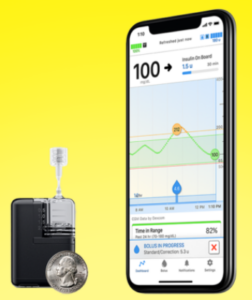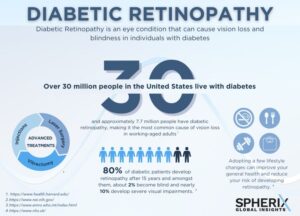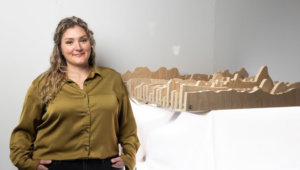Tandem CMO shares Mobi feedback, expansion plans by Elise Reuter for MedTechDive.com, 29 July 2024.
 Tandem Diabetes Care this year began a full launch of its smallest insulin pump, called Mobi, after the device received clearance from the Food and Drug Administration last year. The pump is available for people with Type 1 diabetes ages six and up. At the American Diabetes Association’s Scientific Sessions in June, Tandem shared results of a six-week survey from the initial limited launch of the device that found 86% of users were satisfied with Mobi
Tandem Diabetes Care this year began a full launch of its smallest insulin pump, called Mobi, after the device received clearance from the Food and Drug Administration last year. The pump is available for people with Type 1 diabetes ages six and up. At the American Diabetes Association’s Scientific Sessions in June, Tandem shared results of a six-week survey from the initial limited launch of the device that found 86% of users were satisfied with Mobi
According to Tandem Chief Medical Officer Jordan Pinsker, “We want to expand the market, not just take from other pumps. We want more MDI conversion. We want people to go on pumps who weren’t on them before. We also want to change the narrative. It’s not tubed versus tubeless. It’s wearability. The key to this is you can move it and you can disconnect. A patch pump — let’s say your skin’s irritated — you take that patch pump off, that’s it. The patch is dead.
 With Mobi, you can say, “I’ll move it.” You can take it out of your sleeve. You can disconnect it from the infusion set and move the whole thing somewhere else. You could say, “Today I want to wear it in my pocket and I don’t want to have it on my skin.”
With Mobi, you can say, “I’ll move it.” You can take it out of your sleeve. You can disconnect it from the infusion set and move the whole thing somewhere else. You could say, “Today I want to wear it in my pocket and I don’t want to have it on my skin.”
In some situations, you just do not want the device on. For intense sports, for example. You can disconnect it. Those kinds of lifestyle freedoms are what really make this unique.
Read more: Tandem CMO shares Mobi feedback, expansion plans
People With Vision and Hearing Loss Call for Better Access to Diabetes Tech by Paul Heltzel for diaTribe.org, 1 July 2024.
 Many people with hearing and vision loss feel left out of efforts to make diabetes care and technology accessible, diabetes disparity experts said at the recent ADA 2024 conference. People who are deaf, partially deaf, blind, or have low-vision are frequently excluded from clinical research, found a 2022 study by Health Affairs, for reasons that are unclear and rarely stated. In addition, people in these communities say they need to be involved in the development of diabetes technology so that the devices work for them.
Many people with hearing and vision loss feel left out of efforts to make diabetes care and technology accessible, diabetes disparity experts said at the recent ADA 2024 conference. People who are deaf, partially deaf, blind, or have low-vision are frequently excluded from clinical research, found a 2022 study by Health Affairs, for reasons that are unclear and rarely stated. In addition, people in these communities say they need to be involved in the development of diabetes technology so that the devices work for them.
 “We need to include these deaf and hard of hearing and blind and low-vision folks in product development from the beginning,” said Michelle Litchman, medical director of the Intensive Diabetes Education and Support Program at the University of Utah. She explained that people who have vision and/or hearing loss can struggle to use certain diabetes devices because they have not been designed with modifications to enable use.
“We need to include these deaf and hard of hearing and blind and low-vision folks in product development from the beginning,” said Michelle Litchman, medical director of the Intensive Diabetes Education and Support Program at the University of Utah. She explained that people who have vision and/or hearing loss can struggle to use certain diabetes devices because they have not been designed with modifications to enable use.
“We are excluding folks in these communities from clinical trials to the point where we do not know and are not able to prescribe certain key leading diabetes treatments. All this diabetes tech – folks are left out,” she said.
People With Vision and Hearing Loss Call for Better Access to Diabetes Tech
REVISIT: Dexcom G7 and Geofencing, with Justin/Diabetech, 29 July 2024.
SPOTLIGHT on CREATIVITY: Krista Sheneman: Turning Diabetes Into Art shared by Stamps.UMich.edu, 4 April 2023.
 University of Michigan MFA student and type 2 diabetic Krista Sheneman was taking a walk when she glanced at the 24-hour glucose level graph produced by her continuous glucose monitor. She saw ups and downs in the levels – a reminder of the difficult disease she faces.
University of Michigan MFA student and type 2 diabetic Krista Sheneman was taking a walk when she glanced at the 24-hour glucose level graph produced by her continuous glucose monitor. She saw ups and downs in the levels – a reminder of the difficult disease she faces.
But after looking at the graph, Sheneman soon began to visualize landscapes, such as mountains, valleys, and hills within the data. Inspired by her own body and motivated by technology at Stamps, Sheneman has created a wooden sculpture that captures her “glucose landscapes.”
“I typically make sculpture work. I started labeling my work as “time-based sculpture” because I realized that many of my processes and interests involve labor and collection – both take up much of my time! Through this work, I explore my identity using health, collection, memory, and labor.
I was diagnosed at 29, and it was a shock. At the time, I didn’t know I had a family history of diabetes and wasn’t given a lot of information during that first office visit. I later connected with a wonderful diabetic community in Cincinnati that helped me understand my diabetes.
Chronic illness isn’t linear, so my feelings and tolerance levels change daily. Some days are awesome, and I can accomplish everything on my crazy long to-do lists, but others aren’t. You just have to be kind to yourself.”
 Krista was featured at the June 2024 DiabetesMine D-Data Exchange, with her “Glucose Landscape” project.
Krista was featured at the June 2024 DiabetesMine D-Data Exchange, with her “Glucose Landscape” project.
Read more: Krista Sheneman: Turning Diabetes Into Art


Hmm, I think tandem might have lost its mind with this nonsense of moving your pump on a daily basis. Give me a break. I think they are losing their mind. We will see.